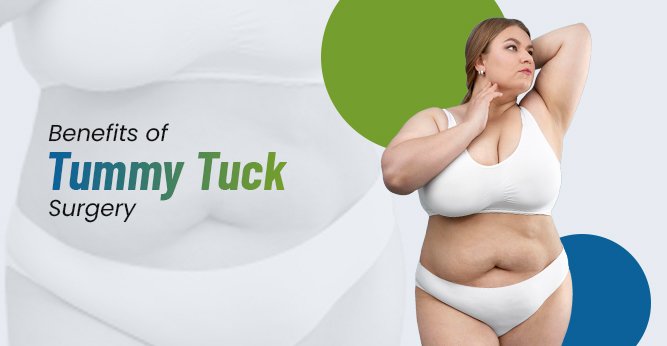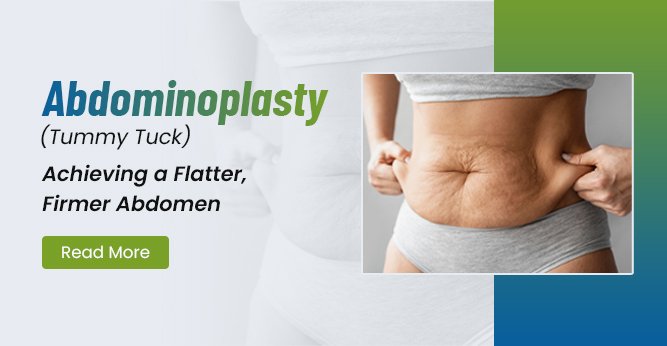In today’s world, achieving a toned, contoured midsection can be a challenging goal, even for those who are committed to diet and exercise. For individuals who have tried everything but are still struggling with loose skin or weakened abdominal muscles, abdominoplasty, also known as a tummy tuck, offers a solution. This surgical procedure not only improves the appearance of the abdomen but also restores weakened muscles, helping to achieve a smoother, firmer look.
What Is Abdominoplasty?
Abdominoplasty is a cosmetic surgical procedure that removes excess skin and fat from the abdomen while tightening the abdominal muscles. Often sought by individuals who have experienced significant weight loss, pregnancy, or aging, this procedure can be life-changing for those looking to regain confidence in their body’s appearance.
Tummy Tuck Surgery for Flat Abdomen
Many people choose a tummy tuck for aesthetic reasons, but there are several practical benefits as well. This surgery helps address concerns that cannot be corrected through non-surgical means. Common reasons to consider a tummy tuck include:
- Excess Skin and Fat: Abdominoplasty removes loose skin and fatty deposits that may linger despite a healthy lifestyle.
- Muscle Laxity: Pregnancy or significant weight fluctuations can weaken the abdominal muscles, which a tummy tuck can repair.
- Enhanced Self-Esteem: For many, improving their abdominal contour leads to increased confidence and satisfaction.
Types of Abdominoplasty
1. Full Abdominoplasty
A full abdominoplasty is the most extensive type of tummy tuck. It is ideal for individuals with considerable excess skin and fat across the abdomen. This procedure typically involves the removal of a large portion of skin and tissue from the lower abdomen, repositioning of the navel, and tightening of the abdominal muscles.
2. Mini Abdominoplasty
The mini tummy tuck is less invasive than the full procedure and is suitable for those with less excess skin and fat, often limited to the area below the navel. This option involves a smaller incision and typically does not include muscle tightening or navel repositioning.
3. Extended Abdominoplasty
An extended abdominoplasty addresses not only the abdomen but also the flanks (or love handles). It’s a more comprehensive surgery that is ideal for individuals with excess skin and fat that extends beyond the abdominal area.
Who Is an Ideal Candidate for Tummy Tuck Surgery?
Ideal candidates for abdominoplasty are individuals who:
- Are in good overall health and maintain a stable weight
- Have realistic expectations about the results
- Do not smoke, as smoking can hinder healing
- Have loose, sagging abdominal skin or weakened abdominal muscles
Abdominoplasty Benefits and Procedure
Pre-Surgery Preparation
Prior to undergoing abdominoplasty, patients must undergo medical evaluations to ensure they are suitable candidates for surgery. This includes a thorough consultation with the surgeon to discuss goals, examine abdominal anatomy, and understand any potential risks.
Anesthesia
Abdominoplasty is usually performed under general anesthesia, ensuring that patients remain comfortable and pain-free during the procedure.
Incision and Muscle Repair
For a full abdominoplasty, the surgeon makes an incision across the lower abdomen, typically from hip to hip. Excess skin is removed, and the abdominal muscles are tightened by suturing them together. This step helps create a firm, flat abdominal wall.
Removal of Excess Skin and Fat
Excess fat and skin are carefully removed to enhance the abdomen’s shape. In some cases, liposuction may be used alongside abdominoplasty to sculpt the area further.
Repositioning the Navel
In a full tummy tuck, the navel is usually repositioned to create a natural, proportionate appearance following the removal of skin.
Closing the Incision
The incision is closed with sutures, and drains may be placed to remove any fluid that accumulates post-surgery. These drains are typically removed within a few days, depending on the patient’s healing progress.
Recovery After Abdominoplasty
Immediate Post-Operative Care
Post-surgery, patients are monitored in a recovery area and may need to stay overnight in the hospital for observation. Pain, swelling, and bruising are common but managed through prescribed pain relievers.
Week 1: Initial Healing Phase
During the first week, patients are advised to avoid strenuous activities and may be required to wear a compression garment to support the healing area and reduce swelling. Rest is essential, and patients should avoid bending, lifting, or straining.
Weeks 2-6: Resuming Light Activities
Most patients can return to light activities after two weeks, though it’s crucial to continue avoiding heavy lifting and intense physical exertion. By the end of six weeks, many are ready to gradually resume exercise, as advised by their surgeon.
Long-Term Healing
Complete recovery can take several months, during which the scars will continue to fade, and the abdominal area will become firmer and more defined.
Benefits of Tummy Tuck Surgery

Abdominoplasty offers a variety of benefits beyond a flatter stomach:
- Improved Abdominal Contour: Tummy tuck surgery removes loose skin and excess fat, giving the abdomen a firm and toned look.
- Reduced Back Pain: Strengthening the abdominal muscles can offer core support, often alleviating lower back pain.
- Improved Posture: Strengthened abdominal muscles can contribute to better posture, helping to reduce strain on the back.
- Long-Lasting Results: The results of abdominoplasty are typically permanent, provided the patient maintains a stable weight.
Risks and Considerations
As with any surgical procedure, there are potential risks with abdominoplasty. These may include infection, scarring, blood clots, and anesthesia-related complications. It’s essential to choose a board-certified surgeon and discuss all concerns to make an informed decision.
Cost of Abdominoplasty
The cost of a tummy tuck can vary depending on factors such as the surgeon’s experience, geographic location, and the extent of the surgery. Additional costs may include anesthesia, surgical facility fees, and post-surgery garments. In some cases, a portion of the procedure may be covered by insurance if it is deemed medically necessary.
Maintaining Results Post-Surgery
To maintain the results of a tummy tuck, patients are encouraged to:
- Adopt a Healthy Diet: Eating a balanced diet helps avoid weight gain that could impact the surgery’s results.
- Exercise Regularly: Incorporating strength training and cardiovascular exercise helps maintain abdominal tone.
- Avoid Smoking: Smoking can negatively affect skin elasticity and healing.
Conclusion
Abdominoplasty, or tummy tuck surgery, offers a transformative option for those looking to achieve a firmer, flatter abdomen. From improved posture and back support to a boost in self-confidence, the benefits are both physical and emotional. However, like any surgical procedure, it requires careful consideration and a commitment to maintaining the results.
Whether for aesthetic or practical reasons, a tummy tuck can be life-changing for individuals seeking a fresh start in their journey to a healthier, more confident self.




